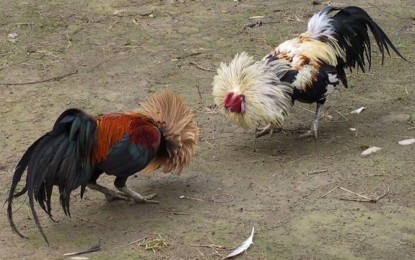Secrets of the Sabong Grandmaster: Understanding the Art of Cockfighting
The elaborate world of cockfighting, specifically as exercised by the Sabong Grandmaster, offers an interesting research study in the confluence of animal habits, training methods, and affordable approach. To truly comprehend the subtleties of this art kind, one must explore how the Grandmaster balances the physical and emotional facets of fowl training while browsing the ethical considerations fundamental in this conventional practice.
History of Cockfighting

As the centuries progressed, cockfighting spread throughout different continents, adjusting to neighborhood custom-mades and social dynamics. In medieval Europe, it obtained popularity amongst the nobility, who regarded it as a display screen of riches and condition. By the 17th century, the sporting activity had developed itself in England, resulting in the development of formalized policies and regulations.
In the Americas, especially in the Caribbean and the Philippines, cockfighting handled one-of-a-kind qualities affected by indigenous techniques and colonial backgrounds. Today, while the sport remains questionable and encounters legal difficulties in several areas, its historical significance continues to trigger discussions regarding pet legal rights, cultural heritage, and social values. The evolution of cockfighting mirrors wider motifs of human interaction with nature and the intricacies of tradition.
Recognizing Rooster Habits
Recognizing fowl habits is crucial for those involved in the sporting activity of cockfighting, as it directly affects training, performance, and health. Roosters exhibit a variety of habits that can suggest their emotional and physical states. Notably, aggression, territoriality, and social hierarchy play significant roles in their temperament.
Aggression is a natural instinct in fowls, largely driven by the need to assert prominence. Observing interactions among fowls can disclose their pecking order, which is essential for handling their setting. A certain fowl shows a much more assertive pose, while a submissive one may show signs of stress and anxiety or worry, such as crouching or avoiding eye call.

Training Strategies for Champions
Efficient training strategies are vital for creating champ fowls that master the competitive field of cockfighting. An organized technique makes certain that each bird reaches its complete possibility, combining physical fitness with psychological fortitude.
To start, developing a consistent training routine is vital - Sabong Grandmaster. This consists of daily workouts that enhance stamina, dexterity, and endurance. Routines might include regulated competing sessions with both synthetic and online challengers to mimic competition, allowing fowls to develop their battling skills in a risk-free setting
Incorporating dexterity drills, such as challenge programs and jumping exercises, try this out substantially enhances a fowl's physical capacities. Furthermore, introducing diverse surface areas and terrains can boost their adaptability throughout fights.
Mental training needs to not be forgotten. Acquainting the birds with the sounds and views of a competitive atmosphere can reduce stress and anxiety and stress and anxiety on fight day. Furthermore, positive reinforcement techniques, such as satisfying preferable behaviors, can infuse confidence in the fowls.
Finally, maintaining a tranquility and assertive visibility throughout training sessions promotes trust between the handler and the fowl, crucial for attaining optimum performance. With each other, these methods develop a thorough training program that cultivates champions prepared to excel in the field.
Health And Wellness and Nutrition Basics

Including a mix of barley, wheat, and corn supplies required carbohydrates, while protein resources such as fish dish, soybean meal, or pests support muscle growth and recuperation. Furthermore, incorporating fresh fruits and veggies can enhance the total nutritional account, providing anti-oxidants that boost the body immune system.
Hydration is just as important. Accessibility to tidy, fresh water ought to be a priority, as dehydration can drastically impact efficiency (Sabong Grandmaster). Regular wellness examinations are crucial to keep track of for any kind of possible diseases or bloodsuckers that might jeopardize a rooster's condition
Additionally, the timing of feed is important. Giving nourishment at suitable periods guarantees that roosters preserve energy levels throughout their training and healing phases. By concentrating on these wellness and nutrition fundamentals, sabong fanatics can aid their fowls attain optimal efficiency in the affordable sector.
Methods for Successful Matches
Success in cockfighting rest on a mix of strategic prep work and in-ring tactics. Efficient suit approaches start long before the fight, with mindful choice of the rooster. Breeders need to prioritize hereditary characteristics such as aggressiveness, endurance, and resilience, guaranteeing that the picked bird shows a strong lineage of performance.
Training is important; roosters should be conditioned via a program that consists of exercise, sparring with other birds, and exposure to numerous atmospheres. This prep work not just constructs stamina however additionally boosts the bird's versatility to different challengers.
Throughout the suit, a trainer must use keen observation and fast decision-making. Identifying the challenger's techniques permits timely changes, such as changing the fowl's stance or urging a lot you can check here more hostile actions. Timing is vital; understanding when to motivate or restrain the bird can imply the difference between triumph and defeat.
Finally, keeping a calm temperament throughout matches fosters self-confidence in the rooster. A well balanced strategy, integrating both psychological and physical readiness, inevitably results in successful end results in the field, demonstrating that mastery in cockfighting is as much about technique as it has to do with the birds themselves.
Final Thought
The proficiency of cockfighting, as exemplified by the Sabong Grandmaster, rests on an extensive understanding of fowl behavior, effective training strategies, and ideal health and nourishment. By integrating conventional experiment modern-day techniques, champions are grown, showcasing exceptional toughness, dexterity, and durability. Strategic understandings throughout suits further improve the chance of success. Ultimately, the tricks of the Sabong Grandmaster hinge on the unified equilibrium of these aspects, guaranteeing the proceeded tradition of this ancient sport.
To genuinely realize the Learn More nuances of this art form, one need to check out exactly how the Grandmaster harmonizes the emotional and physical aspects of rooster training while navigating the moral considerations fundamental in this typical method.Recognizing rooster actions is vital for those entailed in the sporting activity of cockfighting, as it directly influences efficiency, training, and health and wellness.Keeping optimum health and nutrition is important for making certain that roosters reach peak performance in the cockfighting field. Offering nutrients at proper periods guarantees that fowls maintain power levels throughout their training and healing phases.The proficiency of cockfighting, as exemplified by the Sabong Grandmaster, pivots on a detailed understanding of fowl habits, efficient training methods, and optimum health and nourishment.